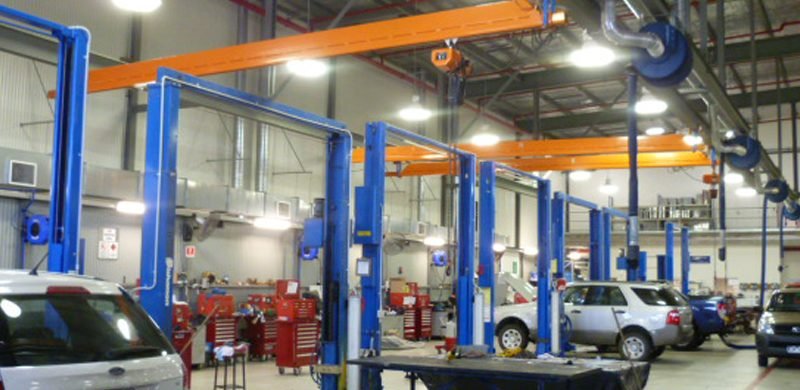When traffic and obstacles are causing congestion on the factory floor, cranes and hoists can leapfrog these floor space issues by lifting a load and transporting it efficiently to its destination. These lifting devices undergo extensive engineering refinements in order to raise productivity and keep personal injuries out of the workplace, but the designers of such powerful lifting solutions don’t sit on their laurels, not when new refinements are crying out to be added to the design.
Cranes play a vital role within today’s manufacturing environments. Side-by-side with their compact cousins, the hoists that use chains and other motive powers sources to convey cargoes, cranes incorporate supplemental parts to maximize the functionality of their mechanisms. First of all, functionality is an expression of purpose, meaning cranes and hoists have to be matched to an application and its environment. Weight ratios and load limitations are analysed in a case study setting as part of this examination of where the crane will live. Next in this maximization of system resources comes transportation efficiency. A customized overhead rail route is incorporated into the plan, a directional planning layout that mirrors workplace coverage and therefore increases material handling efficiency.
The customization know-how employed by a far-sighted crane installation company guarantees that cranes and hoists extend their floor maneuvering capabilities to establish an all-inclusive operational sphere of coverage. The rail-guided routing of the mechanism ensures every remote avenue of the facility is reachable. Meanwhile, reach is only part of the design. The patented superiority of a superior lifting mechanism also takes its cue from the integration of a highly regarded research and development workshop. This key performance-enhancing facility adds important ingredients to lifting machinery, feature that can only be compared to the intelligent evolution of productivity and safety-assessed lifting elements.
The final ingredients in the efficient operation of these heavy-duty overhead lifters comes from two distinctly different directions. There’s the plain but essential need for a maintenance plan, a strategy that will keep hoists at the peak of their lifting and transporting abilities as set by the design team. But there’s also future aids in this scenario, the integration of computer guidance systems and sensor-equipped remote controls that radiate safety-readiness features. Some of these electronics will undoubtedly find their way into the lifting mechanism of tomorrow, but it’s worth remembering that a stripped back mechanism with a minimal profile is still often regarded as the best way to maximize performance.
Global Track Australia Pty Ltd


